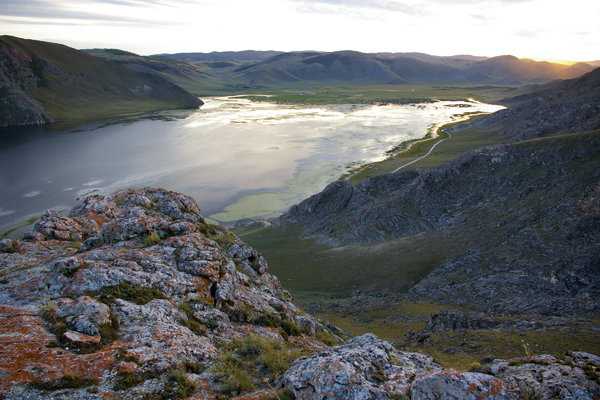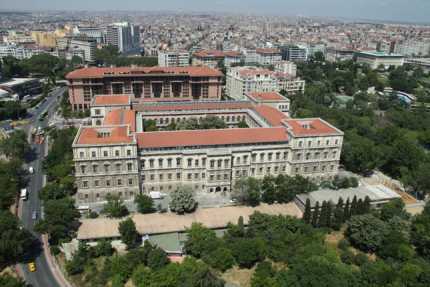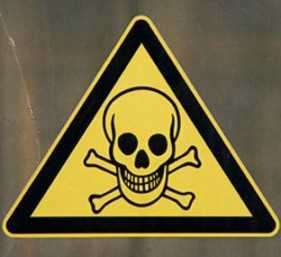Refractory Failure Elimination in Fludised Bed Reactors
Technical paper IRE – Refractory Failure Elimination (Download .doc)
Dr Cengiz Erkan
Principle Engineer BHB Billiton
PhD.MSc.BEng.FIEAustCPEng.MIREng.DBus
Dr Tom Honeyands
BHP Billiton – Newcastle Technology Centre
Dr Andrew Shook
BHP Billiton – Newcastle Technology Centre
Dr Philip Clausen
School of Engineering, University of Newcastle
-
Executive Summary
Spalling of fluidised bed reactor refractories and subsequent feed leg blockages have been a significant cause of lost production in Iron, alumina and nickel processing plants. This work describes the Strategic Refractory Management Plan developed to address high refractory failure rates during the first years of operation of the Port Hedland HBI plant.
An example is then given of a mathematical modelling study of the heat transfer and stresses in the reactor vessel to see whether any conclusions can be drawn about the maximum allowable heating or cooling rates.
The reactor hot face refractory and insulation layers, restrained by a stainless steel shell, were modelled using “strand7” finite element software. Here only the dome of a simplified reactor, not including expansion joints, anchors, gas inlets and outlet, was modelled to determine the stress profile through the wall when subject to thermal loading.
Several alternative refractory configurations were considered for this application. The compressive thermal stresses predicted on heat-up were found to always be lower than the crushing strength of the materials in this investigation, and no conclusions can be made regarding maximum heating rate.
When the internal surface of the reactor is cooled by cold purge gasses, tensile stresses can potentially be generated in the hot face refractory, along with shear stresses between the hot face and the insulation. Tensile stresses were only predicted in one case – 150mm hot face / 150mm insulation – during rapid cooling. This configuration was therefore rejected.
Shear stresses in the other refractory configurations were found to be relatively low (<1.1MPa). No indications of the reasons for previous refractory failures were found using this simple model. It is concluded that differences in the dry-out and curing of the 60% Alumina and 80 % Alumina based castables hot face refractories is responsible for their differing performance.
-
Introduction
In this paper we consider the example of BHP Billiton’s hot Briquetted iron (HBI), processing plant in Port Hedland due to problematic processing characters. In this plant the high alumina refractories must contain abrasive solids at elevated temperatures and pressures under reducing gas conditions. A combination of reasons accelerated the deterioration and shortened the life expectancy of the refractories during this period. The following examples are typical of the problems experienced:
-
Reactor refractory dome collapse
-
Refractory anchor failures
-
Reactor wall refractory failures
-
Hot spots
The objectives of this paper are two fold:
-
To outline the overall refractory management plan that was put in place and to demonstrate the economic benefits
-
To describe a modelling study used to assist in troubleshooting the refractory failures and in assessing alternative refractory thickness options for one of the vessels including:
-
150 mm hot face and 150 mm insulation
-
150 mm hot face and 50 mm insulation
-
100 mm hot face and 200 mm insulation (the “normal” configuration)
-
The Port Hedland Example
Cracking, spalling and or even complete failure of reactor refractories causes significant lost of production, increased maintenance and increased operational costs. These refractory failures can be caused by:
-
Incorrect material selection: Refractories must be chosen with the correct thermo-physical properties including thermal conductivity, coefficient of thermal expansion, strength and chemical compatibility with the process stream.
-
Incorrect thermal or physical design, particularly with consideration to compatible thermal expansion and the refractory-steel interface.
-
Incorrect dryout, curing and heatup: Non-uniform temperature distribution during heatup, either surface or internal, can significantly reduce refractory integrity.
-
Excessive thermal cycling or the presence of thermal shock conditions during operation
To address this problem, a technical team supervised by Genghis Erkan developed a long term “Strategic Refractory Management Plan in BHP Billiton”, to systematically solve refractory and related problems. This plan provided systematic material selection and evaluation process and enabled us to manage and monitor such things as uniformity of heat transfer during start-up, operation and shut down.
This resulted in longer campaign periods, less equipment wear, shorter shut-downs and decreased overall operating costs. The resulting benefits can be seen in the later years of operation shown in Table 1. The corresponding increase in refractory life is shown in Table 2.
Table 2: Refractory Operational Life (Briquetting Feed Bin)
|
Year
|
Days
|
|
1999
|
70
|
|
2000
|
75
|
|
2001
|
60
|
|
2002
|
140
|
|
2003
|
220
|
To achieve these improvements, the following actions were taken as part of the Strategic Refractory Management Plan:
-
Development of refractory specifications and replacement of poor quality / unsuitable refractories with suitable ones
-
Design modifications in some critical areas to improve refractory life, such as briquetting feed bin striker pad, reactor dome refractories re-design, replacing panels with a continuous ring and Implementation of an effective monitoring system
-
Development of suitable heat up procedures to remove all free and molecular moisture and chemical binder, relieving stresses in the structure, promoting uniformity of thermal conductivity and minimising the impact of porosity on the system
-
Elimination of thermal shock conditions via uniform preheating of the refractory system prior to normal operation and minimisation of thermal cycling
-
Removal of hot face refractory line expansion joints in the walls of vessels
Figure 1 show refractory failures, which have decreased significantly since the full implementation of this strategy.
Figure 1. Refractory failures from 1999 to 2003
-
Mathematical Modelling
To assist with the modification to the refractory design, and to guide changes to start up and operating strategy, a number of mathematical models were used. In conjunction with this, the failures of the refractory lining were extensively studied during post mortem investigations, Historical plant data were analysed to determine refractory performance relative to operating conditions, and in service tests were carried out.
4.1 Heat Transfer Analysis
The first step was to carry out an analysis of the heat transfer environment. A set of data were examined to give a good range of heat up and cool down rates actually experienced in the plant.
The temperature profiles through the refractory were calculated using a commercial heat transfer package, Heating, using the thermal properties of the refractories supplied by the plant technology department and assuming that the thermocouple present in the gas space of the reactor vessel was a good approximation to the hot face temperature, and applying external convective heat transfer. An example of the temperatures calculated through the refractory thickness is given in Figure 2.
Figure 2. Temperatures calculated for the 100mm hot face / 200mm insulation reactor configuration
When the reactor is cooled due to process upsets, the internal surface of the hot face can be cooled below the temperature at the hot face / insulation boundary (see Figure 3). This sub-cooling has the potential to generate tensile stresses in the hot face refractory and shear between the hot face and insulation. These stresses are calculated in the next section.
4.2 Stress Analysis using Finite Element Modelling
A finite element model of the dome of the reactor was created to determine the stress profile through the reactor wall when subject to the thermal loading calculated in Section 4.1. The reactor consists of a 20mm thick, 3740mm internal diameter stainless steel cylinder with a hemispherical dome cap. The internal surface of the shell is coated with insulation refractory with this coated with hot face refractory. The “normal” configuration has 200mm of insulation and 100mm of hot face.
To analyse the thermally induced stress in the upper wall section of the reactor requires a full 3D model to be built and solved. Ignoring the two nozzles in the reactor’s dome section, however, simplifies this structure to a solid of revolution. Here a planar section through the wall can be modelled to represent the complete stress field in the structure as long as this section can be extruded 360 around an axis to create the structure.
Modelling the dome as a solid of revolutions also requires the material properties, loading and constraints to be axisymmetric in nature, that is, they are circumferentially independent. Here we assumed all material properties to be isotropic with the lower edge of this section of the bin restrained from moving in the axial direction only.
Figure 4 shows the finite element model of the simplified dome of the reactor vessel. The model consists of just over 5000 low-order plate elements with the red, blue and green coloured elements modelling the hot-face refractory, insulation refractory and stainless steel respectively. Nodes on the lower edge of the cylindrical section were constrained from moving in the axial (y) direction. The material properties used for the stainless steel, insulation and hot-face are given in Table 3.
Early modelling work showed that the internal surface of the hot face was always in compression for the entire temperature cycle. Here it was assumed that the zero stress state occurred at 40C, the ambient air temperature. This assumption, however, may be in error as the hot face refractory was cured at a temperature significantly above ambient. As such, the temperature profile through the wall during the curing process is more likely to coincide with the zero stress state. At this zero stress state, the modelling has indicated that tensile stress will occur on the internal surface of the hot face refractory.
The model was also solved where the zero stress states were set at both 550°C and 700°C to see if the stress profile through the wall was sensitive to its initial temperature state.
Table 3. Material properties used in finite element model
|
Material
|
Young’s Modulus of Elasticity (GPa)
|
Poisson’s ratio
|
Density (kg/m3)
|
Thermal expansion coefficient mm/mm°C
|
|
Stainless steel
|
199.95
|
0.32
|
7, 806
|
1.72×10-5
|
|
Insulation
|
4.865
|
0.3
|
800
|
8.5×10-6
|
|
Hot Face
|
4.865
|
0.3
|
2100
|
8.5×10-6
|
-
Finite element Analysis Results
-
Compressive and Shear Stress During the Early Part of the Operating Cycle
Table 4 below shows the maximum compressive stress and the shear stress at the interface of the insulation refractory and hot face refractory during the heat-up period and into the early cool down part of the bin’s operating cycle. As expected, the maximum stress for all times considered occurred on the plate element adjacent to the inside surface of the hot face refractory. The shear stress rz, shown in Table 4 was the value at the centroid of the hot face element adjacent to the boundary. As can seen, the value of the shear stress is small in comparison to the normal stresses.
Table 4. Maximum compressive stress and shear stress at the hot face – insulation junction during the early part of the operating cycle.
|
Time (seconds)
|
r MPa (max)
|
z MPa (max)
|
MPa (max)
|
rz, Mpa
|
|
465
|
-26.1
|
3.9
|
-26.1
|
-0.003
|
|
10000
|
-34.5
|
0.49
|
-34.5
|
0.15
|
|
20000
|
-34.9
|
0.12
|
-34.9
|
0.18
|
|
80000
|
-31.7
|
-0.08
|
-31.7
|
0.17
|
|
166800
|
-30.0
|
-0.19
|
-30.0
|
0.16
|
|
200000
|
-20.28
|
-0.23
|
-20.28
|
0.12
|
|
300000
|
-8.58
|
-0.02
|
-8.58
|
0.05
|
-
Thermal Stresses when the Zero Stress State is above Ambient
The following two zero stress state temperatures were considered: a wall temperature of 550C and a wall temperature of 700C.
Zero Stress State at a Wall temperature of 550C
Figure 3 and 4 show contours of circumferential stress for the 200,000s and 350,000s respectively with the wall temperature at 550C. As can be seen, figure 5 shows compressive stresses in the element adjacent to the inside surface of the hot-face with the other two recording tensile stress. The centroid stress is shown in Table 4.
Figure 3. Contours of stress at 200,000s with an internal temperature of 550C.
Figure 4. Contours of stress at 300,000s with an internal temperature of 550C.
Table 5. Stress at the centroid of the plate indicated in figure 3 for the 550C zero stress state.
|
Time (sec)
|
r MPa
|
z Mpa
|
MPa
|
rz, MPa
|
|
167000
|
-6.08
|
-0.0023
|
-6.08
|
0.035
|
|
200000
|
3.56
|
-0.017
|
3.56
|
-0.042
|
|
300000
|
15.8
|
-0.073
|
15.8
|
-0.107
|
Zero Stress State at a Wall temperature of 700C
Table 6 documents the stress for the case 167,000s and 200,000s. Results for the 300,000s case was not considered, as these stresses will simply be higher than for the case at 200,000s.
Table 6. Stress at the centroid of the plate indicated in figure 6 for the 700C zero stress state.
|
Time (sec)
|
r MPa
|
z MPa
|
MPa
|
rz, MPa
|
|
167000
|
1.41
|
-0.077
|
1.41
|
-0.018
|
|
200000
|
10.96
|
-0.137
|
10.97
|
-0.086
|
-
Stresses in Different Refractory Thickness
As previously stated, the normal wall had 200mm of insulation refractory and 100mm of hot face. Here two other configurations are considered: 150 mm of insulation and 150mm of hot face and 50mm insulation and 150mm of hot face. The zero stress state was assumed to be at 40C. Temperature profiles through the wall were supplied.
The results show for the 150mm hot face/ 50mm insulation case the refractory is in compression at both 200,000s and 300, 000s as indicated in Table 7. The shear stress at the hot face/insulation junction is shown in the last column in the table.
For the 150mm hot face /150mm insulation case, however, the plate element adjacent to the inside surface is in tension as shown in Table 8. Here the shear stress at the hot face /insulation junction is of similar magnitude to that in the 150mm hot face/50mm insulation case. The tensile stress at the surface of the hot face suggests that this insulation/hot face configuration is undesirable.
Table 7. Normal stresses at the centroid of the plate adjacent to the inside surface of the hot face and the shear stress at the hot face insulation boundary for 150mm hot face /50mm insulation case.
|
Time (sec)
|
r MPa
|
z MPa
|
MPa
|
rz, MPa (interface)
|
|
200000
|
-16.0
|
-0.095
|
-16.0
|
0.081
|
|
300000
|
-7.55
|
-0.045
|
-7.55
|
0.038
|
Table 8. Normal stresses at the centroid of the plate adjacent to the inside surface of the hot face and the shear stress at the hot face insulation boundary for 150mm hot face /150mm insulation case.
|
Time (sec)
|
r MPa
|
z MPa
|
MPa
|
rz, MPa (interface)
|
|
200000
|
13.54
|
-0.017
|
13.55
|
-0.052
|
|
300000
|
7.4
|
-0.018
|
7.5
|
-0.028
|
-
Discussion
The heat-up rate used in Figure 2 is extremely high, as the gas thermocouple has essentially been set instantaneously to 700C. The state of stress in the bin is generally compression in the refractory with the stainless steel shell in tension. Even at this extreme heating rate, the compressive stresses in the refractory do not exceed the crushing strength of either 60% Al2O3 or 80% Al2O3 refractories where the crushing strength is between 68 and 72MPa.
These stresses were calculated for the three refractory configurations:
-
100 mm hot face / 200 mm insulation: The internal surface remains in compression, with small amounts of shear at the interface
-
150 mm hot face / 150 mm insulation: The internal surface goes into tension, suggesting that the refractory will crack during cooling in this case.
-
150 mm hot face / 50 mm insulation: The internal surface remains in compression, with small amounts of shear at the interface. In this case there is essentially no sub-cooling of the internal surface, suggesting that this configuration will be the most resistant to thermal stresses on cooling. The wall temperature would increase from approximately 85C to 180C, and the heat losses would increase from approximately 80kW to 185kW with this configuration. This heat loss is still small in comparison to the other losses through briquetting.
During the thermal analysis a simple comparison was made between 60% Al2O3 and 80% Al2O3. Analysis of historical data by plant suggests that the performance of 60% Al2O3 has been superior to that of 80% Al2O3. A simple measure of thermal shock resistance, based on avoiding the initaition of fracture, can be calculated using the following equation.
The results of the comparison between 60% Al2O3 and 80% Al2O3 using Equation (1) are given in Table 9.
The termal shock resistance, R, is given by:
R’ = k..(1-) / E.a (1)
Where;
R is Thermal shock resistance
k is the thermal conductivity,
is the failure stress,
E is Young’s modulus (value of 4.8 Gpa used),
a is the coefficient of thermal expansion,
and is Poisson’s ratio (value of 0.3 used).
Table 9. Simple comparison of thermal shock resistance of 60% Al2O3 and 80% Al2O3.
|
60% Al2O3
|
80% Al2O3
|
|
K (W/m.K)
|
0.92
|
1.56
|
|
(MPa)
|
6
|
16
|
|
a (mm/mmC)
|
8.5 x 10-6
|
7.0 x 10-6
|
|
R’
|
95
|
520
|
This comparison suggests that 80% Al2O3 should have better thermal shock resistance than 60% Al2O3 refractories, which is presumably why it was used. There is clearly some other reason for the differences in performance. One possibility is that differences may exist in the behaviour of the two refractories during dry out and curing. 80% Al2O3 is a wet gunning mix, whereas 60% Al2O3 is a dry gunning mix. Both are reportedly dried out using the same temperature ramps and holds (up to 550C).
This was explored using special stress model, by changing the temperature at which the refractory was at a “zero stress” state from room temperature to 550C. This assumes that the castable refractories form their bonds at the curing temperature of 550C. Heating above this temperature puts the refractory into compression as before, however, cooling below this temperature puts the internal surface of the refractory into tension and could lead to failure.
This hypothesis is likely to be generally correct, in that large thermal cycles are bad for the refractories and that the reactor should be kept at it’s operating temperature whenever possible. Other more quantitative predictions cannot be made with our current level of knowledge.
-
Conclusions
The establishment of a Strategic Refractory Management Plan resulted in a significant increase in refractory life at the Port Hedland HBI plant, and a corresponding decrease in refractory management costs.
A mathematical modelling study was carried out as part of this plan. The finite element modelling indicated that if the zero stress state was assumed to be at an ambient temperature of 40C, then the stress in the refractory wall was compressive at all times during a typical operating cycle. If, however, the zero stress state was set at the refractory curing temperature, then the stress within the refractory wall maybe tensile.
Furthermore, raising the refractory curing temperature can lead to tensile stress in a greater percentage of the operating cycle. This led the refractory engineers to closely examine the drying and curing of refractories, and led to improved practices. The refractory wall with a 150 mm hot face/150 mm insulation configuration produces tensile stress on the inside surface of the hot face irrespective of the temperature of the zero stress state. These results suggest that this thickness combination is inappropriate for a refractory vessel.
To achieve the best results for the plant a proper evaluation is best accomplished by complete cooperation and communication between refractory manufacturer, installer, and internal stakeholders. To continue to operate the plant without a “Strategic Refractory Management Plan” will prove to be very costly and unsustainable.
References
Genghis Erkan, BChEng, MscEnv, MIEAust, CPEng, MIREng “Fludised Bed Reactor Refractory Implementation Strategy, 2003”.
Dr P.D Clausen, BE, PhD, “A Finite Element Analysis of the Refractory Wall, 2001”.
Dr Andrew Shook, BHP Billiton Technology Internal report, “Thermal Stress Analysis of BFB Refractories, 2001”.
Dr Tom Honeyands, BHP Billiton Technology Internal Report, “Thermal Stress Analysis of BFB Refractories, 2001.






